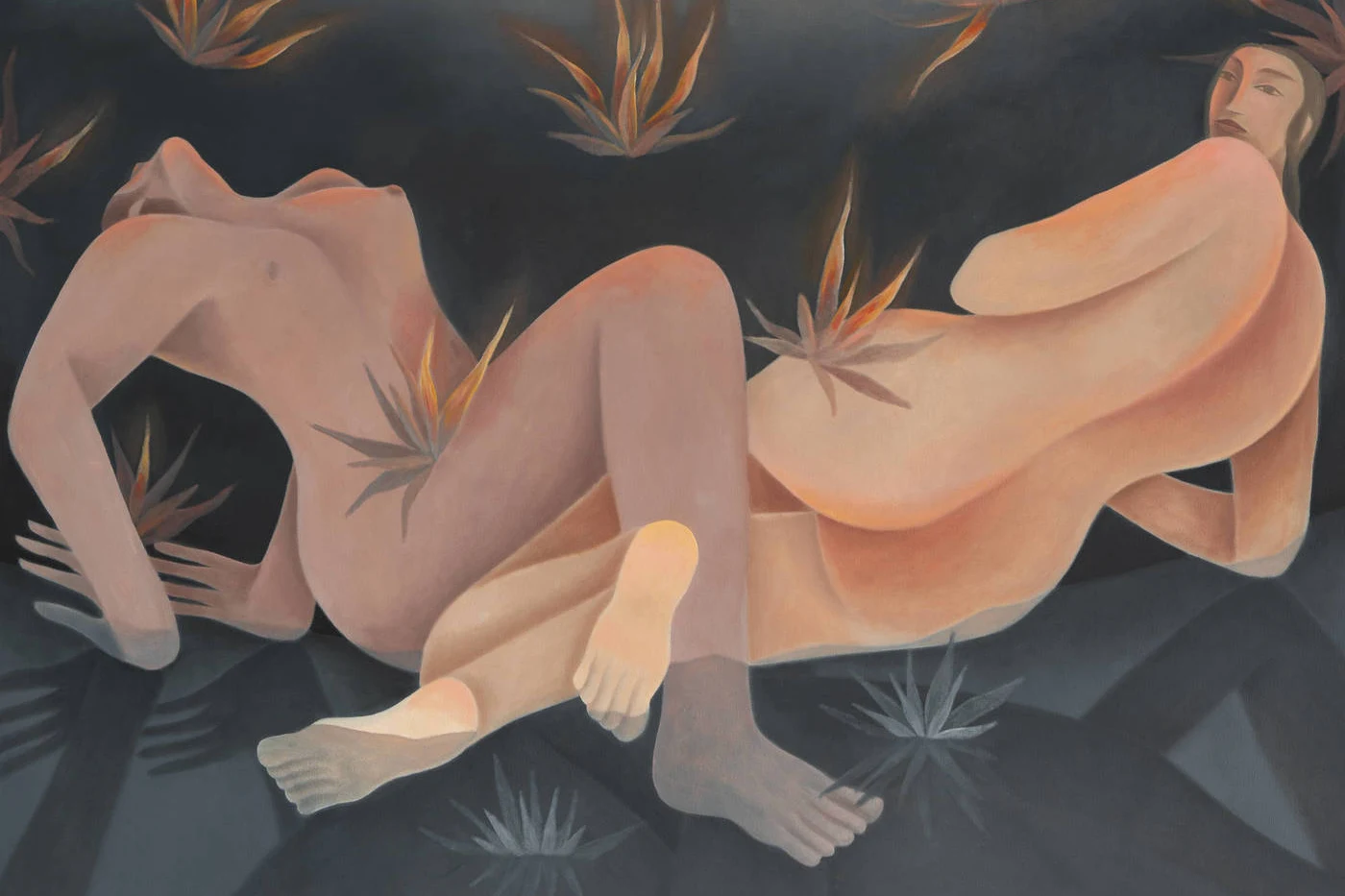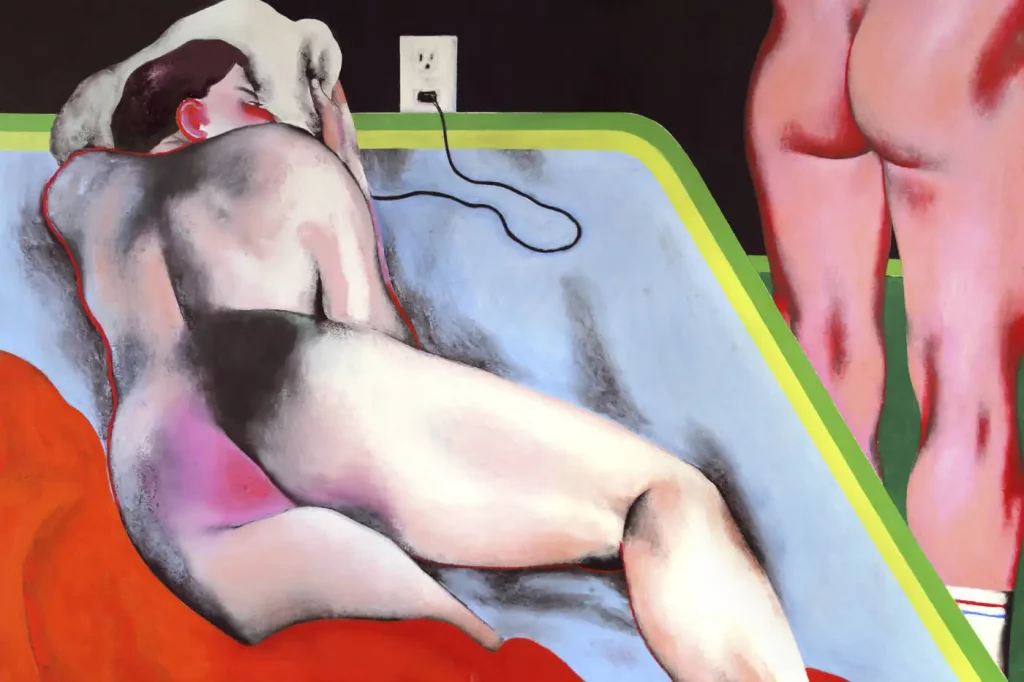Poised to welcome art practitioners and the public, Future Fair 4th edition establishes itself as an enhancing commercial platform within the broader New York City art ecology
Future Fair at its fourth edition
Officially launched in 2020 by Rachel Mijares Fick and Rebeca Laliberte, the Future Fair will not experience its first physical existence until 2021 due to restrictions imposed by the pandemic. Since its second edition, the Fair has settled in the Chelsea district in New York City.
Now in its fourth year, Future Fair will return within the walls of Chelsea Industrial, a transformative venue between Chelsea and Hudson Yards, from 10-13 May 2023. Poised to welcome art practitioners and the public, Future Fair establishes itself as an enhancing commercial platform within the broader New York City art ecology.
The inspiration and Vision
Looking at the Future Fair’s statement, we can observe how the Fair has been conceived to address an intrinsic constraint of the art system: the lack of access.
«In an industry often heralded for its lack of access, Future Fair endeavors to be an accessible environment that allows new, more diverse voices to thrive in a typically competitive landscape», reports the organization’s online statement.
«We were interested in lifting the veil for galleries on the expenses that go into an art fair so that they have a greater degree of understanding and agency in how their participation fees are used», Mijares Fick and Laliberte say.
Future Fair as a business model
Inspired by cooperative business models, Future Fair views the galleries as their shareholders. As a result, founding Galleries are included in a profit-sharing plan with the company for the first five years, splitting thirty-five percent of the Fair’s profits.
Future Fair is an alternative model that relies on symmetric information and an equitable allocation of agency between the host fair and the galleries. The platform was designed and built from the ground up in 2018 through a relentless flow of interactions between art dealers, exhibitors, and collectors, aiming to develop an innovative and fruitful geometry for all stakeholders.
Ethics of the community
Future Fair has been born within a specific ethical domain. The horizon shared by the participants is grounded in the same assumption: the essential function of art in shaping the society. Future Fair’s community of dealers, art professionals, and collectors strives to promote the circulation of new voices and push the boundaries of cultural production.
«First and foremost, it’s a community of dealers, art professionals, and collectors who deeply respect art’s role in society. They are interested in working together to promote culture and platform new voices in contemporary art», says one of the founders.
Edition after edition, the value of the process started by the Fair is proven by the growth and expansion of the community itself.
Proximity to the artists’ needs and the surfacing of new voices
In addition to the pursuit of the commercial purposes of the exhibitors, the proximity to the priorities of the artists is another element that characterizes and defines the specificity of Future Fair.
«They are dealers who are loyal to their artists and value a close relationship with their gallery patrons and collectors», declares one of the founders.
Beyond the relationship with the art system’s already-established players, Future Fair seeks to reach out to new, additional voices that have recently entered the world of collecting: «While the fair attracts the interest of these key players in the art world, we also do a lot of work to cultivate relationships with new collectors, young professionals in the tech and creative industries who are just starting to dip their toes into buying art», Rebeca Laliberte tells.
Responsive inclusiveness at Future Fair
The fair broadly represents every latitude and longitude regarding the exhibitors and artists. Depicting the richness of cultural identity is critical to Future Fair. «This year, we are thrilled to welcome exhibitors from every continent except Australia – hopefully, we’ll get an Aussie next year. We know it’s necessary to see yourself and your shared history reflected through art», Laliberte and Mijares Fick report.
Future Fair and New York City
New York City feeds on its intersections. Immediate surroundings and remote geographies blend and generate flourishing interactions. As a melting pot, it offers unique opportunities.
«New York is home to a loyal and engaged collector base. They are fairgoers who care deeply about art, artists, and the City’s local art scene. The City’s continued strength as a global art hub attracts local and international galleries to the fair», Laliberte and Mijares Fick say. «Whether it’s food, art, or fashion, NYC is a natural osmosis where you’re constantly taking in the cutting edge of culture».
The City’s natural tendency to platform forward-thinking cultures, combined with the curatorial eye of the team, creates a valuable context for audiences to learn about hitherto unknown artists.
Future Fair: digital and physical realms
Future Fair operates on multiple levels. It exists in both the physical and digital realms. Despite the global pandemic, an articulated digital infrastructure has always been inherent to Future Fair’s existence.
«When Covid started, we launched an online show instead of our first face-to-face Fair in May 2020. We already had these digital strategies in place, such as producing short Q&A sessions and editorial newsletters. We adopted hosting events on IG Live early on, and shortly after that, we hosted a small online marketplace, which became an annual project for us», the founders say.
Since the inevitable impact of the pandemic on the sale and circulation of artworks, it seemed timely to implement Future Fair’s digital footprint to navigate uncharted trajectories.
Laliberte and Mijares Fick narrate: «The post-Covid shift of the art world to digital has changed how we view, consume, buy, and sell art. As a result, online sales have increased in ways that would have been unimaginable for most industries before the epidemic. Having a digital component to the fair makes the show accessible to a broader audience than ever before. We’re always looking for ways to expand our outreach strategies, and the digital realm offers endless possibilities».
Furthermore, expanding online presence resonates in terms of accessibility and inclusivity. «Online shows are much cheaper to produce than an in-person fair; it creates further access for emerging dealers to participate in the global art market», the founders say.
Commercial platform and curated context
Future Fair is not a purely transactional space. The curatorial interacts with the dynamics of exchange, buying, and selling; they stand in a relationship of mutual integration.
Participation in the Fair is primarily invitation-based. The Future Fair team ensures a well-defined quality standard when reviewing proposals, which can be measured in innovation and urgency. Selected galleries exhibit works that produce relevant echoes, dissonances, or reverberations within the broader art ecology.
It does not matter whether the gallery is emergent or established if it exhibits a body of work that conveys the urgency of the art, inextricably intertwined with the human condition.
What makes Future Fair unique?
What distinguishes the organization is its propensity for the unexplored, its mobility, and its openness to continuous transformation, illustrates founder Rachel Laliberte: «We are not afraid to experiment, change and evolve».
Future Fair sets up a contact area between outwardly non-contiguous and seemingly antithetical spheres, replacing the notion of the boundary with that of intersection. It fosters their juxtaposition and creates the preconditions for mutual nourishment.
«Each edition also hosts dealers at different points in their careers on an equal playing field; we have dealers who have been running galleries for over 15 years, exhibiting alongside young self-starters who have just opened their first brick-and-mortar or nomadic gallery program in the last few years. Intergenerational exhibitors can «lift each other in different ways», Mijares Fick says.
Future Fair and the future art ecology
Future Fair plays an anticipatory role in the broader art ecology, planting the seeds of a new sense of the art fair. «Our generation understands the value of the collective because we’ve come into adulthood in an era marked by existential challenges that have required us to pivot, be agile, and lean on each other. We are actively building a new art economy filled with new galleries, new artists, collectors and voices. I believe we will see more new platforms built by our generation», concludes one of the founders.
Future Fair
Future Fair hosted its first and second in-person exhibitions in Chelsea in September 2021 and May 2022. It is a platform committed to exploring and producing in-person and digital collaborations and initiatives that champion pioneering artists actively pushing culture forward.




















